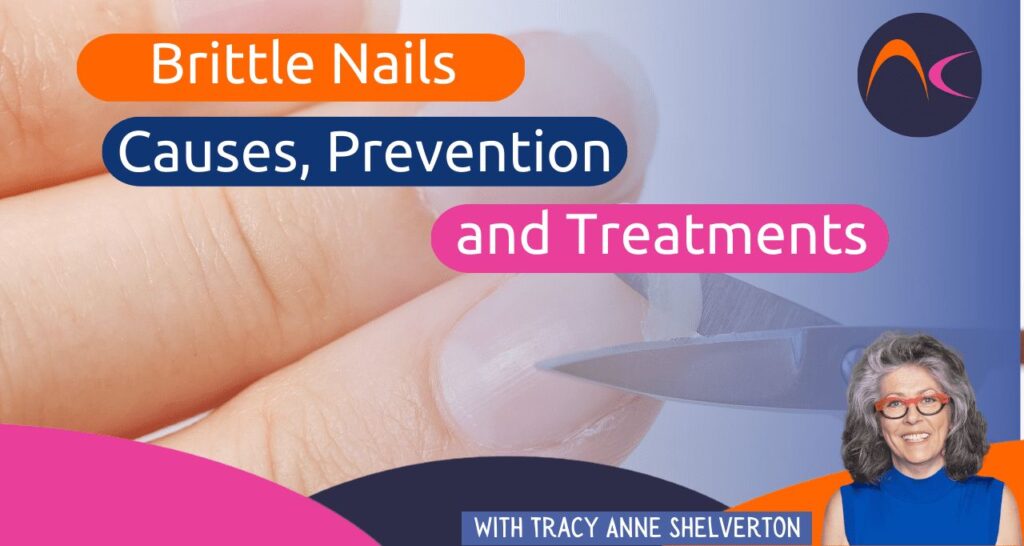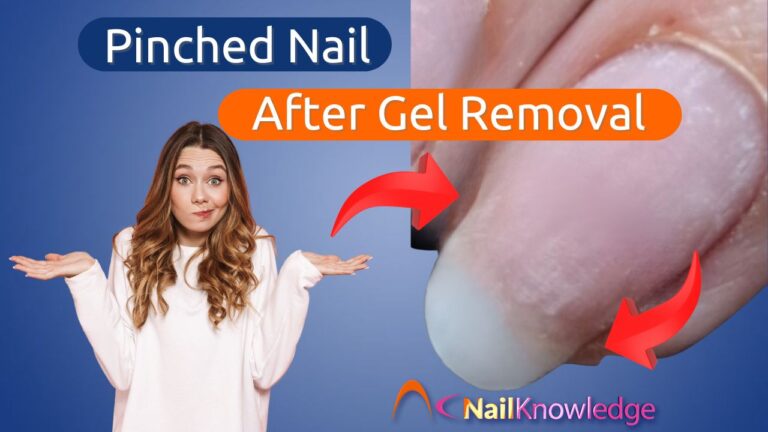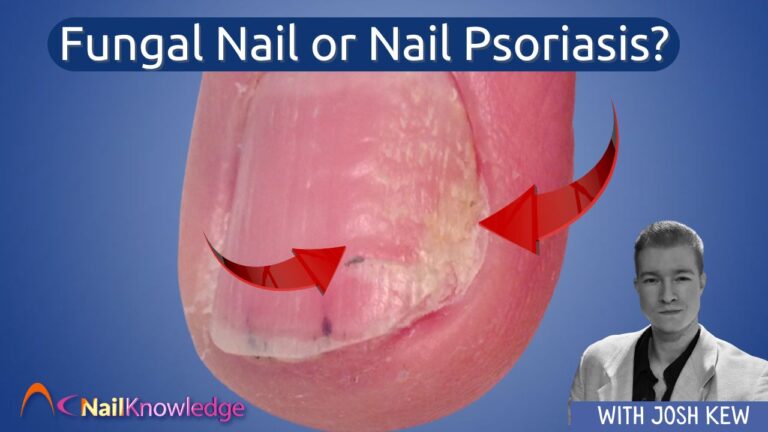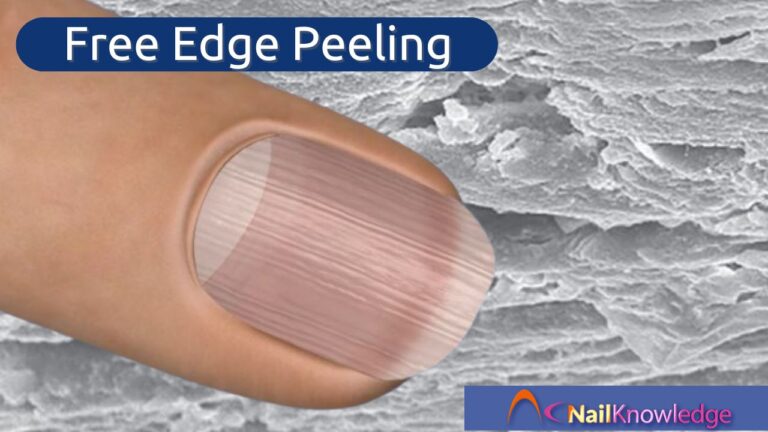Uñas quebradizas son un problema común que puede afectar a cualquiera. Si tus uñas se parten, se pelan o se rompen con facilidad, es posible que te preguntes cuál es la causa de este problema y cómo puedes solucionarlo. En este artículo, exploraremos las causas, la prevención y las opciones de tratamiento para las uñas quebradizas.
Causas de las uñas quebradizas:
Hay muchas razones por las que alguien puede desarrollar uñas quebradizas. Estas son algunas de las causas más comunes:
- Deshidratación:
- es la causa #1 de las uñas quebradizas - Aceite y loción para la piel y las uñas nos ayudará a reponer la hidratación y la grasa que perdemos en nuestra vida cotidiana.
2. Deficiencias nutricionales: Las uñas quebradizas pueden ser un signo de carencias nutricionales, en particular de vitaminas y minerales como biotina, vitamina E y vitamina C.
- Una dieta equilibrada puede ayudar. Las uñas matriz produce células de la placa ungueal 24/7 obtiene sus nutrientes de nuestra sangre.
Tenemos 20 "matrices de uñas" diferentes para 20 placas de clavosEs posible que uno o varios de ellos tengan un riego sanguíneo restringido o que estén dañados de algún modo. Sólo porque una unidad de clavos está afectada no significa que todas lo estén, sino que todas puede se verán afectados.
3. Harsh Productos químicos: La exposición excesiva a productos químicos agresivos como los productos de limpieza, pero el que disolvente que realmente puede causar problemas es el agua.
- No pensamos en el agua como algo peligroso. La lámina ungueal está formada por una compleja composición de células unidas por compuestos que crean una lámina ungueal flexible y perfecta. Cuando la uña se llena de agua (lo que ocurre en muy poco tiempo) se ablanda y se expande (puede que le resulte más fácil cortarse las uñas de los pies después de un baño o una sauna). Cuando el agua se evapora, las células de la lámina ungueal se contraen y vuelven a endurecerse. Este movimiento hace que las pequeñas fracturas y fisuras de la uña se agranden y la uña se vuelva aún más propensa a partirse.
4. Envejecimiento: A medida que envejecemos, nuestras uñas tienden a volverse más quebradizas y secas.
- Si la lámina ungueal está partida, aunque sólo sea ligeramente, su estructura y empezará a perder su capacidad de mantener el equilibrio de humedad y será más propenso a la rotura y a la posible patógeno infecciones, incluso de nuestro propio microbioma residente.
5. Afecciones médicas: Ciertas afecciones médicas como el hipotiroidismo, alopecia, liquen plano, eczema o psoriasis puede causar uñas quebradizas.
- Esto se debe a que todas estas afecciones afectan de alguna forma a la producción de células de la placa ungueal cuando está implicada la matriz ungueal.
6. Factores relacionados con el estilo de vida: Hábitos como morderse las uñas y mala alimentación
- Tenemos 20 "matrices ungueales" diferentes para 20 placas ungueales distintas, es posible que una o varias de ellas tengan un riego sanguíneo restringido o que estén dañadas de algún modo. Que una unidad ungueal esté afectada no significa que todas lo estén, pero todas ellas puede se verán afectados.
Fortalece tus uñas: Estrategias para aumentar la fuerza y la resistencia
Afortunadamente, hay formas de prevenir la aparición de uñas quebradizas. He aquí algunos consejos:
- Practicar una buena higiene y mantenimiento de las uñas: Mantener las uñas limpias y secas puede ayudar a prevenir infecciones fúngicas y otros problemas que pueden debilitar las uñas, aplicar aceite regularmente ayudará a tus uñas a mantener su flexibilidad.
- Las infecciones pueden romper la lámina ungueal y provocar una sequedad excesiva que contribuirá a la fragilidad de las uñas.
2. Evite los productos químicos agresivos: Reduzca al mínimo su exposición a productos químicos agresivos y utilice guantes cuando trabaje con productos de limpieza u otros productos químicos.
- El agua, aunque segura, es una sustancia química que puede afectar a nuestras uñas al instante. (véase el punto 2 anterior sobre las causas de la fragilidad).
3. Sigue una dieta sana: Una dieta equilibrada rica en vitaminas y minerales puede ayudar a fortalecer las uñas desde el interior.
- Anno 2023 sabemos que la única forma de influir en la producción de la placa ungueal es a través de la matriz ungueal y ésta depende de un aporte sanguíneo para recibir sus nutrientes.
4. Utilice revestimientos protectores: Los recubrimientos protectores pueden ayudar a añadir una capa de protección a las uñas.
- Cuando aplicamos un recubrimiento de uñas a un uña natural puede ayudar a la uña a "sentirse" más fuerte, pero la uña sólo será tan fuerte como el revestimientoSuponemos que cuanto más duro es el recubrimiento, más fuerte es la uña, pero no es así, la uña que está debajo del recubrimiento es tan débil o quebradiza como siempre.
- Aceite y Loción en el mantenimiento de las uñas es esencial para detener la fragilidad y crear flexibilidad en la uña de apoyo a la capa de la uña.
- Su salón de manicura profesional elegirá el recubrimiento de uñas adecuado para usted, puede ser que un recubrimiento flexible con un buen mantenimiento de las uñas resuelva su problema, pero puede ser que necesite un fortalecedor profesional o un superponer de acrílico o acrygel para ayudar.
5. Un tratamiento profesional de peluquería añade resistencia pero no compromete la flexibilidad.
- Utilizar un producto profesional que pueda penetrar en las capas superiores de la uña, sellándolas a la vez que mantiene la flexibilidad o incluso la mejora, es una buena forma de ayudar a que tus uñas sean menos quebradizas.
Tratamiento de las uñas quebradizas
Si ya tienes las uñas quebradizas, hay varios tratamientos que pueden ayudarte:
- Aceite y loción tópicos: Determinadas cremas que contienen urea, alantoínaalfa-hidroxi ácidoso ácido láctico puede ayudar a hidratar y fortalecer las uñas, así como un aceite para uñas de buena calidad.
- Esmalte de uñas: Aplicación de la uña polaco o una laca de uñas flexible pueden ayudar a sellar la humedad y añadir una capa protectora a tus uñas.
- Utilice un tratamiento profesional de fortalecimiento de uñas aplicado en su salón de belleza y confíe en él para elegir la mejor opción de recubrimiento para sus uñas.
- Mantenga las uñas y las manos limpias y, después de lavarlas, reponga la humedad y los aceites que se hayan eliminado.
Clavos débiles: Afrontar el reto de la fragilidad y el deterioro
Sin embargo, no hay que desesperar, ya que a menudo se pueden prevenir y tratar.
Un buen mantenimiento de las uñas con aceite y loción, unas buenas prácticas de higiene de las uñas, una dieta sana y la protección de las uñas frente a productos químicos agresivos, evitando la exposición excesiva al agua, permiten mantener las uñas fuertes y sanas.
Si ya padece uñas quebradizas, no dude en probar alguna de las opciones de tratamiento disponibles.
No deje de leer nuestro artículo sobre las ventajas de cutical / aceite para uñas
Las uñas quebradizas pueden ser de todas las formas y tamaños
No hay una sola imagen que muestre lo que es una uña quebradiza, así que tenemos que definirla.
Quebradizo significa 'Duro pero susceptible de romperse con facilidad'.
El término "quebradizo" describe una condición, pero hay muchas condiciones de las uñas que puede describirse como frágil. Aualquier ruptura de las defensas o mal funcionamiento en la creación de nuestras placas ungueales puede provocar que se vuelvan quebradizas.
- Figura 1: Placa de clavos con reborde - Placa de uñas con reborde, la capa superior es quebradiza.
- Figura 2: Placa ungueal liquen plano - La lámina ungueal afectada por el liquen plano también es quebradiza.
- Figura 3: Arboledas verticales - Los surcos verticales que se abren en la lámina ungueal hacen que ésta se vuelva quebradiza.
- Figura 4: Onychoschizis - Se trata de un tipo especial de delaminación llamada "Onychoschizis". La onicosquisis hace que la placa ungueal suelta se vuelva quebradiza.
- Figura 5: División vertical - La división vertical de esta placa de clavos ha provocado que se vuelva quebradiza donde la ranura se une a la cresta.
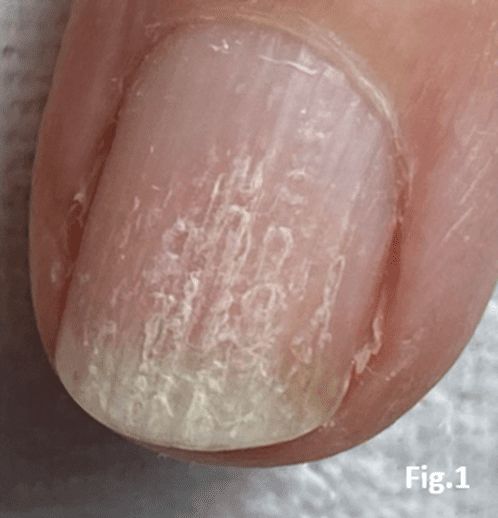
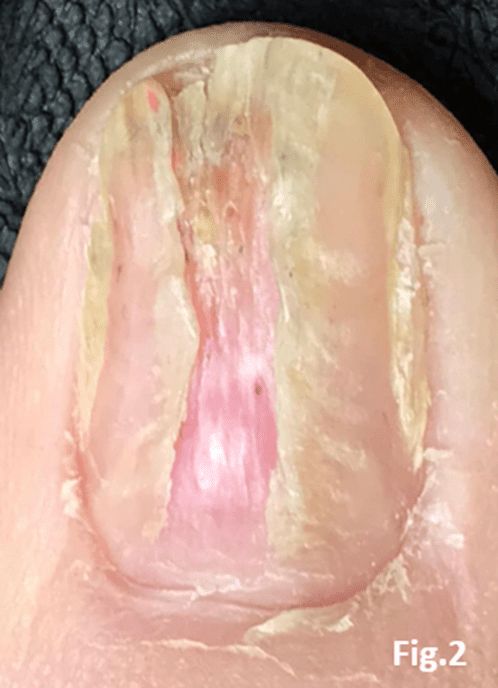
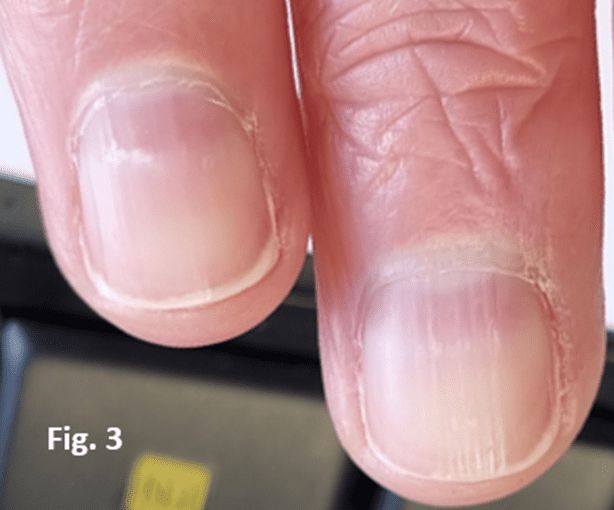

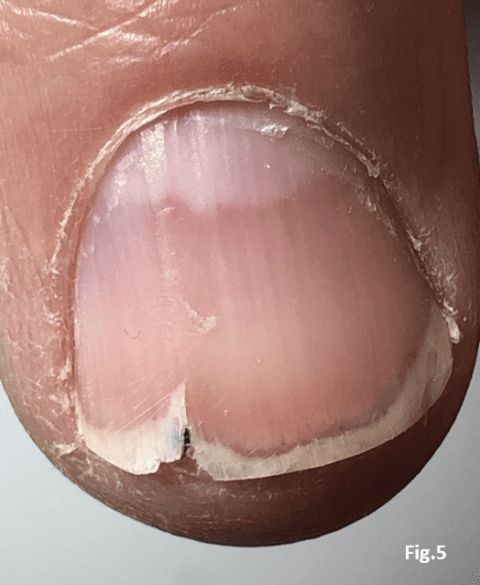
- Células de la placa ungueal
- Infección fúngica
- Uñas quebradizas
- Liquen plano
- Uña natural
- Delaminación
- Recubrimiento de uñas
- Esmalte de uñas
- Placa ungueal
- alantoína
- Ácido láctico
- Unidad de clavos
- Psoriasis
- Vitamina E
- Química
- Estructura
- Patógeno
- Alopecia
- Revestimiento
- Superposición
- Loción
- Biotina
- Matriz
- Disolventes
- Eczema
- Polaco
- Urea
- Ácido

